Understanding a PWC’s Features and How They Benefit You
Modern PWC offer many features to make your ride more enjoyable
A craft’s performance features – like that potent supercharger or radical new hull design – often get the most attention, but it’s the everyday items that can truly impact your day-to-day riding experience. As a result, you may want to pay a little closer attention to them when considering a certain model of craft.
Check out this list of some of the more common features of most PWC, and determine how much of a benefit they are to you individually.
Storage
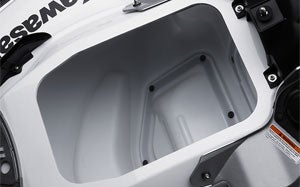
Storage capacities vary widely. The value you place on them will depend on what you plan to do with your craft, and as a result, how much gear you plan to carry aboard. Be aware that some designs may limit actual storage room. The bow compartment typically offers the most volume. Additional storage areas include gloveboxes, small canisters in the console, or dedicated trays between the aft portion of the saddle.
Remember that few storage compartments are literally watertight. To keep vital gear dry consider using dry bags or, in some cases, a manufacturer’s removable tote.
Mirrors
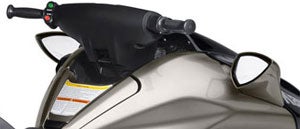
Being able to keep tabs on what is happening behind you is valuable, especially for watersports. Though a spotter should always be used, mirrors can help the driver keep tabs on what’s in their wake. Be aware, however, that not all mirrors truly offer the greatest view. Convex designs can increase your view. The mirror’s mounting location can also determine how functional they truly are.
Pay attention to a mirror’s physical location for other reasons as well. They shouldn’t be in a position that could impact a dock and cause damage.
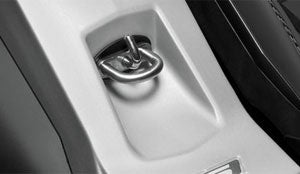
Tow Eye
Tow eyes are essential for watersports, providing a physical attachment point for a towrope. Simple U-bolts suffice, but require you to pass the rope through its own attachment loop. Better choices for those who frequently tow are dedicated tow eyes, which allow that same loop to secure to a small hook within an outer ring. The style makes it quick and easy to attach or remove.
Info Display
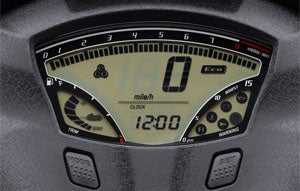
Obviously the key information here is speed and fuel level, as well as warning indicators for overheating and low oil levels. To this info most manufacturers also add RPM and a trim indicator (if equipped). Those are the basics you’ll frequently use. The rest is nice, but not a necessity. This can include anything from engine hours to fuel consumption to depth readings.
Theft-Prevention Device
A PWC is a tempting target unattended at the dock or beach. Theft-prevention devices differ by manufacturer. Yamaha uses a keyfob-style remote, which can activate or deactivate the ignition. Kawasaki opts for a magnetic key in the glove box. Sea-Doo uses the safety lanyard itself, digitally encoded to work only on the craft it is assigned to.
Boarding Step
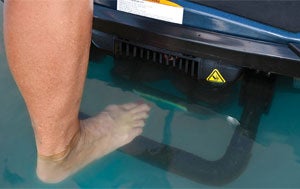
A boarding step is of value to any PWC user, but a step’s true value is probably more directly related to your size, athletic ability, and whether or not you plan to do a lot of ski or board towing, as a step simply eases the transition back onto the boat in deep water.
Bar shape can make a difference. A flatter profile is easier on bare feet than a round bar. Also look for the handles below the seat that will ease climbing back aboard.
Trim
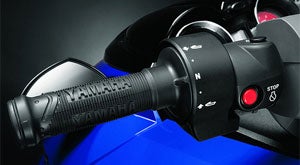
Trim enables a driver to adjust their craft’s running angle by pivoting the thrust nozzle higher or lower than its standard position. Trimming the nozzle down forces the bow to go lower in the water, putting more hull in the water to enhance cornering or limiting bowrise during acceleration. Trimming the nozzle up will bring the bow of the craft up, lessening the amount of hull in the water and increasing top speed.
Trim can be manually or electronically controlled. Manual trim is simple, yet can sometimes be difficult to adjust at higher speeds due to the force or water exiting the pump. Electronic trim has no such limitations, but often requires a driver to take his eyes off the water to check the trim position on a display. Some models offer preset positions, which can be reached with a double-tap of the trim button.
Reverse
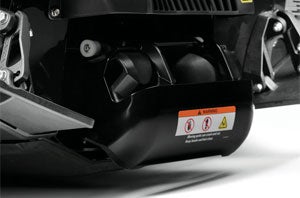
Once viewed as almost a luxury add-on, reverse is now almost a must in most craft. Why value it? Reverse takes the stress out of maneuvering in tight areas, backing away from the launch ramp, or coming into a dock.
Manufacturers vary in their approach to reverse. Sea-Doo craft use the company’s Intelligent Brake and Reverse System, which links a portside-mount reverse lever on the handlebars to a modified reverse bucket at the jet pump to effectively give craft a forward, neutral, and reverse. Start the craft in neutral and you’ll stay relatively motionless. Squeeze the reverse lever and you’ll back away, squeeze the throttle and you’ll move forward.
Yamaha and Kawasaki avoid an electronic solution and instead utilize a mechanical reverse, linking a console-mounted lever to a stern reverse bucket via a physical cable. Select Yamaha craft feature a “mechanical” neutral, putting a detent into the throw of the lever in a position that redirects pump thrust so that it neither pushes the boat forward or redirects it into reverse. On other craft you can find a neutral setting by playing with the throw of the lever.
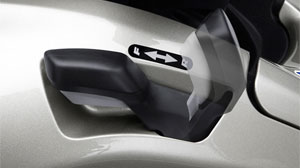
The position of the reverse lever is worth consideration. Both Sea-Doo and Kawasaki keep reverse controls to port, enabling the driver to simultaneously use reverse and throttle. Yamaha keeps reverse controls to starboard, forcing the driver to release the throttle before enabling reverse (or doing a little crossed-arm Twister to get around it).
Looking at one of the few new models or numerous older models that don’t include reverse? Keep in mind that your craft will always be in forward motion, even at idle. You’ll have to respond accordingly to approach a dock, shore, or another boat and avoid damage.
Cruise Control
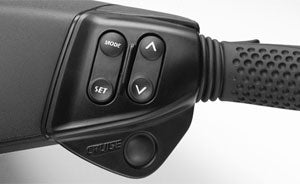
Every manufacturer currently offers models with cruise control, a benefit of using electronic throttle. Simply put, cruise control enables the driver to maintain a steady speed without requiring constant pressure on your throttle finger. Once the speed is set, drivers are able to simply fully squeeze the throttle and hold the grip securely with a full-finger grip. Buttons typically allow for small up-down adjustments; release the throttle and the speed control disengages.
No-wake modes function similarly to cruise control, but require no pressure on the throttle whatsoever. Activate no-wake mode and the craft will maintain a slow, steady speed (about 5 mph).
Related Reading
How To Make The Most Of A PWC Demo Ride
How To Find Good Service For Your PWC
How To Avoid Common Mistakes of the Newbie PWC Owner
Get PersonalWatercraft.com in your Inbox!
Like PersonalWatercraft.com on Facebook
Comments
Most Popular

2025 Yamaha JetBlaster PRO 2-Up Review

2024 Kawasaki Jet Ski STX 160X Review

Remembering the Sea-Doo XP

Whatever Happened to the Wetbike?

2025 Yamaha JetBlaster Review






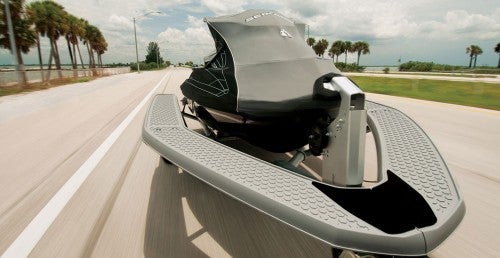






 Your Privacy Choices
Your Privacy Choices